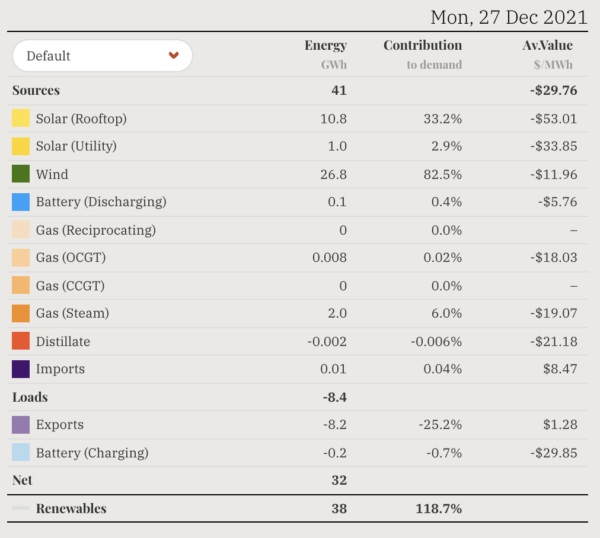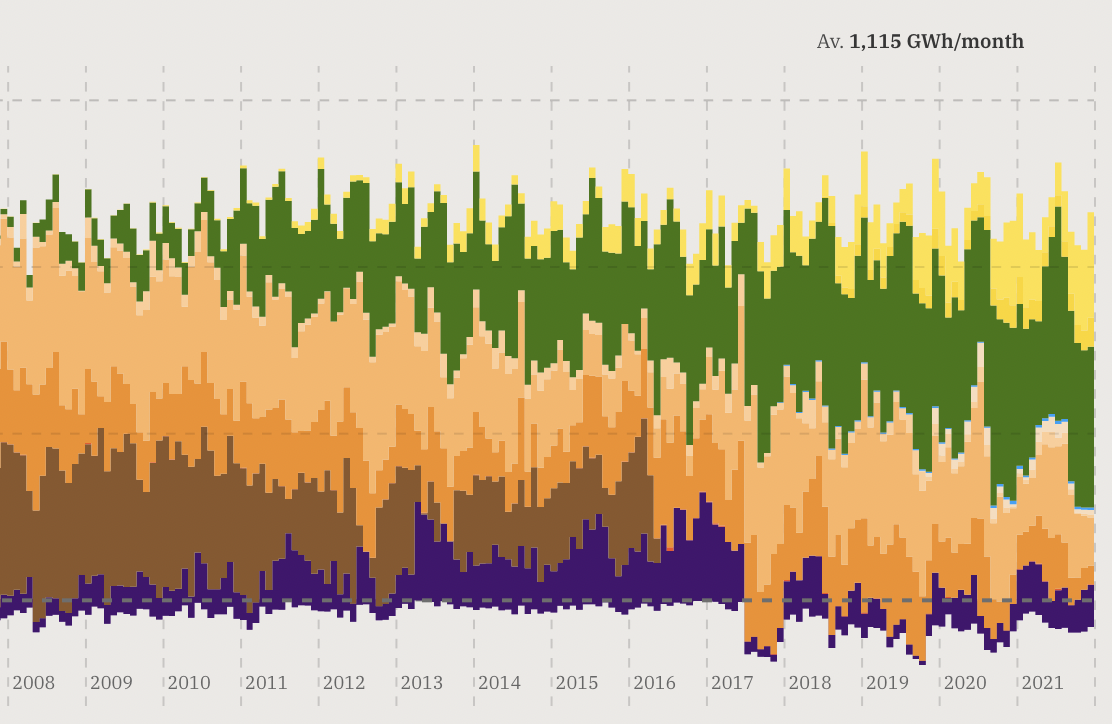South Australia’s 156 hours powered by wind, rooftop solar and utility-scale solar farms, firmed by fractional amounts of gas, set a new record in a state which seems to surpass its personal bests every week. The week-long run is even speculated to be record breaking for comparable grids around the world.
Almost two thirds of the state’s power was sourced from wind, with rooftop solar accounting for almost 30% and solar farms around 6% during the period.
South Australia is aiming to run completely on renewables by 2030, though it seems to be hitting that target with increasing regularity eight years early.

OpenNEM.org.au
What the state really wants to do though is become a net exporter of green energy for Australia. In fact, it could already do so if transmission lines connecting South Australia to New South Wales and Victoria had more capacity.
The state is eagerly awaiting the realisation of Project EnergyConnect, a major interconnector linking it with NSW. The project is slated for commissioning in 2023 and will hopefully be completed by 2025.
Just yesterday, one of the biggest renewable energy developers in Australia, French company Neoen, said it had started work on the first stage of what will be the state’s largest wind, solar and battery storage project, known as Goyder Renewables Zone.
This project, which is planning to install 1200 MW of wind, 600 MW of solar and 900 MW of battery storage capacity, can only be realised with the completion of Project Energy Connect, however.
Until new interconnectors are built, South Australia will likely be forced to continue curtailing its extensive renewable assets, just as it did during its shining week leading up to December 29.
In the past 30 days, rooftop solar accounted for an average of 24.7% of South Australia’s electricity demand; utility-scale solar farms came in at 7.4%, while wind averaged exactly 40%. In total, variable renewable energy provided an average of 72% of the state’s electricity.
This content is protected by copyright and may not be reused. If you want to cooperate with us and would like to reuse some of our content, please contact: editors@pv-magazine.com.









2 comments
By submitting this form you agree to pv magazine using your data for the purposes of publishing your comment.
Your personal data will only be disclosed or otherwise transmitted to third parties for the purposes of spam filtering or if this is necessary for technical maintenance of the website. Any other transfer to third parties will not take place unless this is justified on the basis of applicable data protection regulations or if pv magazine is legally obliged to do so.
You may revoke this consent at any time with effect for the future, in which case your personal data will be deleted immediately. Otherwise, your data will be deleted if pv magazine has processed your request or the purpose of data storage is fulfilled.
Further information on data privacy can be found in our Data Protection Policy.